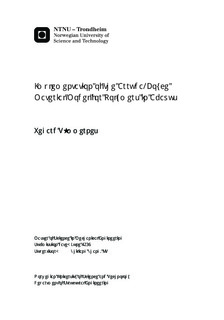Implementation of the Arruda-Boyce Material Model for Polymers in Abaqus
Master thesis
Permanent lenke
http://hdl.handle.net/11250/235692Utgivelsesdato
2014Metadata
Vis full innførselSamlinger
Sammendrag
In this Master s thesis, a user material subroutine for polymers is imple- mented in the FEA-program, Abaqus. The first part of the thesis provides an overview of large deformation mechanics and the Arruda-Boyce con- stitutive law for polymers. This is a strain-rate dependent viscoplastic material model that includes strain softening and hardening. The main principles behind user material subroutines for Abaqus were presented, and an explicit approach was chosen due to simplicity. Several challenges regarding the implementation have been analyzed and solutions have been proposed. One particular problem was the calculation of Hencky strain where the traditional Padé approximation did not suffice.This thesis also explains how to use the user material subroutine in an FEA, as well as explaining weaknesses and how to avoid pitfalls. The implemented model was thoroughly tested, with several strain rates and loading conditions. The material parameters in the model were also examined and discussed.An analysis of void growth in polycarbonate was done using the implemented model. An unknown error in the user material constrained the analysis to very small deformations. However, the analysis showed that polymers experience void growth, but not as excessive as metals. The reason for this is probably the strain hardening effect imposed by the polymer chains.It was concluded that several types of polymers may be modeled by the user material subroutine, but that it has to be further developed in order to account for complex geometries with large deformations. This thesis aims to offer all NTNU students useful tips on how to develop user material subroutines for polymers in Abaqus, and thus make a small contribution to the research of polymer behavior.
